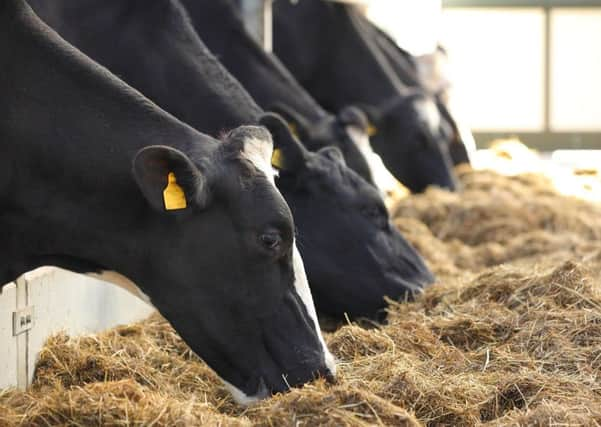As we enter 2020, now is the time to discuss milk pricing policy


Dairy rations are now ranging from £230/tonne (18% protein mix) to £255/tonne (20% protein).
This increase in feed prices concludes what has been an expensive year for local dairy farms, with input prices increasing whilst farms have been receiving a very disappointing and disproportionate farmgate milk price.
Advertisement
Advertisement
A year of poor farmgate milk prices has led to local dairy farmers having to take action to save money to maintain cash flow. We are hearing that feed merchants are reporting that business is sluggish, with long standing customers being approached in early winter to see if farmers need any extra stocks, which is unheard of in many cases but would be a sign that sales volumes are down. What this indicates is that dairy farms are having to cut back on the amount of concentrates they are feeding their cows and provides evidence that the low milk prices are impacting upon cash flow and expectations as to future revenues.
These input price rises are not a recent occurrence but are part of a long-standing trend on dairy farms. Fuel and fertiliser, key inputs for any dairy farm, have seen relentless price increases and it is therefore no surprise that the most recent CAFRE benchmarking data, has shown that total costs on Northern Ireland dairy farms has increased from £615 per cow in 2000 to £1,552/cow in 2019 representing an increase of 152%.
What has the base milk price been over the same period? In 2000, the average DAERA farmgate price was 18.52ppl and in 2019, the year-to-date average milk price is 26.75ppl. Hence in this time period the price has risen 44%. On this evidence, the milk price is failing to keep with the pace of increase of the rise in input prices.
Throughout 2019, the Ulster Farmers’ Union have challenged the pricing policy of local dairy processors having issued eight press releases on this very topic, expressing our anger and bewilderment at unjustified reductions in the base milk price. Our requests for a plausible explanation have been met with deaf ears despite Northern Ireland now having the second lowest milk price in the EU.
Advertisement
Advertisement
The most predictable theme at this time of year is not the bringing down of the Christmas decorations, rather it is the dairy processors telling their producers that everything is okay since they are receiving their “winter bonus”. This would be a welcome boost where it not for the feeling amongst farmers that it is more-often-than-not, used to cover-up drops in the base price. And now we have salt being rubbed into the wounds with confirmation that Irish co-ops are paying higher winter bonuses to Republic of Ireland producer compared to those in Northern Ireland.
In the run-up to the winter bonus payment, for the first nine months of the year, farmgate prices fell by 2.50ppl, down by 10%. Yet indicators such as AMPE (Actual Milk Price Equivalent), which is an indicator of the factory gate value of a litre of milk used for butter and skimmed milk powder, rose from 27.40ppl to 30.20ppl, an increase of 10%. Butter prices were cited by processors as an excuse for falling farmgate milk price, yet it is a small proportion of the product mix in Northern Ireland and more potently, recent Kandar data has shown that retail prices have remained high.
The question is what can be done? We cannot afford to have another year of empty promises and excuses. Dairy farmers need to receive a more reflective price for the milk they produce. The way farmgate milk prices are calculated must be addressed, as it not at all transparent judging by the last 12 months.
Looking to 2020, we need to have an open and grown up discussion on constituent pricing and open-up the debate on the how the dairy supply in Northern Ireland is not delivering for our primary producers.